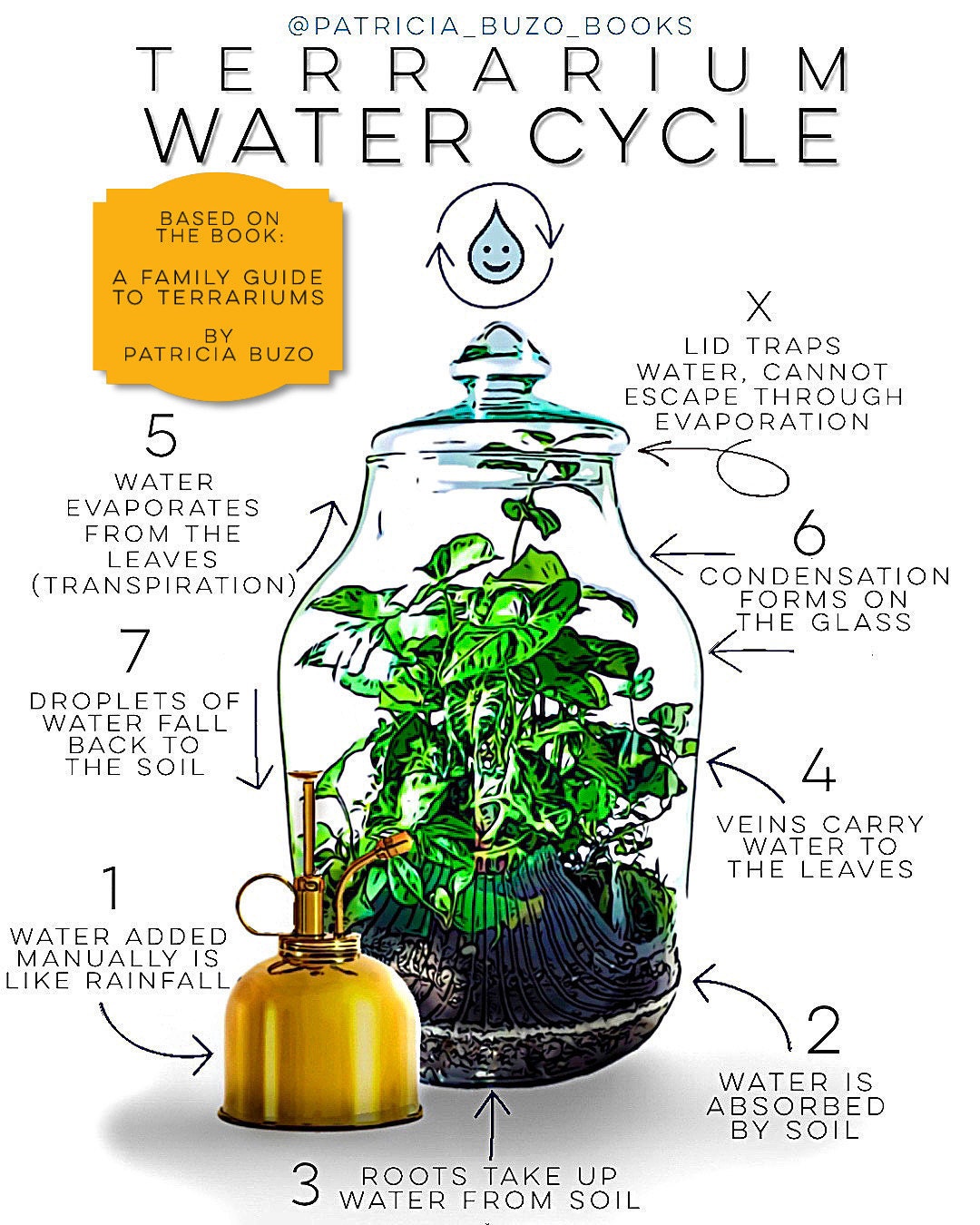Creating a contained ecosystem has everything to do with water. Previously I have discussed what type of water is appropriate for terrarium plants (hint: distilled), and now I want to explain the water cycle in an easy to understand format.
Follow the numbers from 1-7 shown on the image. Once you get to 7 go back to step number 2 and follow the cycle again. Did you notice we skipped step 1 the second time around? That’s because virtually no water is lost through evaporation (from the jar) when the system is sealed.* No additional watering is necessary. This is the reason terrariums are good for humidity-loving plants, and can go months or even years without needing more water.
*some containers have a tighter seal than others. A very small amount of water is lost through evaporation in jars with a loose-fitting lid and these can be watered manually more often.
Over the years I’ve had people contact me and express concern that there was fog, or condensation, on the inside of the glass and ask how they could get rid of it. The truth is, some condensation is not only perfectly normal but also beneficial. It means there is a healthy water cycle at work. It won’t hurt your plants unless the leaves themselves are also touching the glass and sitting in water. Then there may be a possibility of leaf rot, so simply reposition the leaves or trim the plant (this generally does not apply to moss; it can be touching wet glass with no issue).
This cycle is vital to the health of the plants housed within the terrarium. Opening the terrarium on occasion to do routine maintenance is perfectly ok, but try to avoid "airing out" the jar to reduce condensation because ultimately it will negatively effect the mini ecosystem.
Learn more about terrariums in my book A Family Guide to Terrariums

